For Paddy Harte, farming between Strokestown and Rooskey in Co Roscommon, fragmented, heavy land meant that dairy farming was never really a viable option on the farm. That is, until a few years ago.
“We had milked on the farm up until the mid-1990s on a small-scale, but it was something I was brought up around and something I always had an interest in,” Paddy explained.
State-of-the-art robot shed.
“The land around here is very heavy and I came across a farmer zero-grazing and keeping 150 cows housed the entire year with only 20 acres of land adjoining the parlour. I said if it could work for them then why couldn’t it work for me?”
At this point, a plan was put in motion which will eventually see over 120 high-yielding cows being robotically milked in a fully housed system.
The first phase of the development has seen the construction of a cubicle shed with a total of 68 cubicles and one Lely Astronaut A5.
The shed has been designed to fit a second robot over the coming years once the system is up and running.
“We decided to do it in phases so that we could adjust to the system and get cows milking before we increased the numbers,” Paddy said.
“The shed has been designed that we can extend it easily.”
Picture one
As cows will be housed all year round, there was a major focus from the farmer on cow comfort. The benefits from increased lying times on milk production have been well documented.

Picture one.
While in a grazing system, farmers will look at how cost-effective it may be to invest heavily in cubicle accommodation as the target will be to house cows grazing for as much of the year as possible.
“We are targeting that high-yielding cow that can do 11,000 litres when the herd matures,” Paddy said. “The extra production should pay for the extra comfort.”
He continued: “We had originally looked at adapting existing sheds but they would be poor for ventilation and those sheds will be needed for calves or youngstock anyway. We engaged with the lads in Lely Mullingar and they were able to look after the shed design.”
The shed is designed so that cows can be fed on three sides. Running along the length of the shed are Easyfix Evolve feed barriers. These are designed so that cows can stretch out and have access to more feed. The red pipe currently running along the length of the feed barrier will be removed after a couple of weeks but with approximately 60 heifers going into the shed in the coming weeks it was felt it was needed to train them in.
Running along the end of the shed are head-locking barriers with 31 head gates in place. Total feed barrier space is approximately 79.5m for cows in the main cubicle area where there is place for 60 cows.
The isolation area to the rear of the robot room has a further eight cubicles, with individual feed space available to this area. If cows were just fed along the sides of the shed there is still 57.6m of feed space, or 0.96m feed space/cow.
Picture two
Internally, space was a key consideration of the design. Passageways running along the feed barriers at either side of the shed are 4.6m wide. One interesting design aspect was to include a 30cm-wide strip of rubber along the feed barrier, then a 60cm concrete strip and a further 90cm of rubber matting.

Picture two.
The central passage way running down between the rows of cubicles is 2.95m wide. Key with the design was to provide more than one route for cows to get to the feed face as this will mean heifers and younger cows are at less risk of being bullied. In a shed like this, you want cows to be eating, lying down or being milked and a good design will help to facilitate this.
Halfway down the rows of cubicles are 2.15m-wide crossover points.
Cubicles themselves are fitted at 45in to 46in centres (114cm to 117cm). Head-to-head cubicle beds are 4.8m long with 1.9m-long mattresses fitted before the brisket pipe. A lunge zone of 1m is in place between head-to-head cubicles. Diagonally, the distance between the neck rail and the edge of the cubicle bed is 2.1m.
Pictures three to five
Space in front of the robot is also important. The slatted area in front of the robot is approximately 4m while there is a further 1.3m solid concrete area outside the barriers of the robot.

Picture three.
The slats are a somewhat unusual design as they are a concrete/rubber hybrid with rubber segments fitted into the slats (picture four). These are supplied by Wright Quarry Products.

Picture four.
Also located in this area are two large tip-over drinkers supplied by Condon Engineering. Two more are also installed at the other end of the shed. The infrastructure is already in place to install the second robot (picture five).

Picture five.
Pictures six and seven
The decision was made to install a Lely Discovery Collector in the shed as a way of dealing with slurry.
This will take a preset route through the shed and hoover up any slurry.

Picture six.
It will then return to its docking station where it can offload the slurry. It can be set to offload the slurry over the slatted area. Once over a slatted area the collector will act as a scraper and will not hoover up the slurry.
“There were a few reasons we went for this option. The one collector will be able to do the entire shed when phase two is complete too,” Paddy explained. “I was never a big fan of scrapers and with the way the shed was going to be built in stages it would have been difficult. I also like how this hoovers up the slurry instead of pushing it ahead of itself.”

Picture seven.
It means that a tank is only needed at one end of the shed and no tank will have to be built for phase two of the development.
The collector also has a tank of water that can be sprayed before and after the collector to soften the dung in the shed. This is particularly useful during the warmer summer months.
Pictures eight to nine
When cows exit the robot they can be guided through a 1m-wide passageway to an isolation area or back out to the main shed.

Picture eight.
Also installed along this path is a 3m-long Hoofcount footbath. The footbath can be operated manually or it can be set to automatically replenish the solution after a certain number of cows pass through it.
A full-width panel at one end of the footbath will then open and the bath will be flushed out. It will then be refilled with the option to have two different solutions, if required.

Picture nine.
The length of the bath allows for two dips per hoof. The footbath was supplied and fitted by Efficient Farm Solutions.
Picture 10
One interesting aspect of the shed is also the dividing gates used throughout the shed.

Picture 10.
One option is a Guillotine gate supplied by Teemore Engineering but another option is a simple sliding gate. These were fabricated by local man Brian Durr. Also installed adjoining the development is a 16t V-Mac meal silo, supplied by McAree Engineering.
The Lely Astronaut A5 was supplied and fitted by Lely Mullingar, who also supplied the Lely Discovery Collector.
The shed was supplied and stood by Regan Structural Steel while Easyfix supplied and fitted the cubicles and feed barriers along with the mattresses and rubber matting in the shed.
The Hoofcount footbath was supplied by Efficient Farm Solutions.
The construction work was completed by Paddy Harte’s own company, Harte Civil Engineering, with the help of local contractors.
I discussed it with my wife, Mairead, and with a young family we thought it would be the best way forward
The design of the shed was completed by Lely Mullingar with the shed designed to hold the second robot.
“I would always be willing to embrace anything new, I saw the welfare of cows as really vital for such a system,” Paddy said.
“I discussed it with my wife, Mairead, and with a young family we thought it would be the best way forward.”
While we don’t have specific costs for this project, typical costs for cubicle shed and slurry storage would range from €1,000 to €1,500 per cubicle depending on spec so this would bring the investment to approximately €100,000.
The cost of the first Lely Astronaut can range from €125,000 to €150,000 plus VAT, depending on the specifications while the Lely Discovery Collector is €25,000 plus VAT.
For Paddy Harte, farming between Strokestown and Rooskey in Co Roscommon, fragmented, heavy land meant that dairy farming was never really a viable option on the farm. That is, until a few years ago.
“We had milked on the farm up until the mid-1990s on a small-scale, but it was something I was brought up around and something I always had an interest in,” Paddy explained.
State-of-the-art robot shed.
“The land around here is very heavy and I came across a farmer zero-grazing and keeping 150 cows housed the entire year with only 20 acres of land adjoining the parlour. I said if it could work for them then why couldn’t it work for me?”
At this point, a plan was put in motion which will eventually see over 120 high-yielding cows being robotically milked in a fully housed system.
The first phase of the development has seen the construction of a cubicle shed with a total of 68 cubicles and one Lely Astronaut A5.
The shed has been designed to fit a second robot over the coming years once the system is up and running.
“We decided to do it in phases so that we could adjust to the system and get cows milking before we increased the numbers,” Paddy said.
“The shed has been designed that we can extend it easily.”
Picture one
As cows will be housed all year round, there was a major focus from the farmer on cow comfort. The benefits from increased lying times on milk production have been well documented.

Picture one.
While in a grazing system, farmers will look at how cost-effective it may be to invest heavily in cubicle accommodation as the target will be to house cows grazing for as much of the year as possible.
“We are targeting that high-yielding cow that can do 11,000 litres when the herd matures,” Paddy said. “The extra production should pay for the extra comfort.”
He continued: “We had originally looked at adapting existing sheds but they would be poor for ventilation and those sheds will be needed for calves or youngstock anyway. We engaged with the lads in Lely Mullingar and they were able to look after the shed design.”
The shed is designed so that cows can be fed on three sides. Running along the length of the shed are Easyfix Evolve feed barriers. These are designed so that cows can stretch out and have access to more feed. The red pipe currently running along the length of the feed barrier will be removed after a couple of weeks but with approximately 60 heifers going into the shed in the coming weeks it was felt it was needed to train them in.
Running along the end of the shed are head-locking barriers with 31 head gates in place. Total feed barrier space is approximately 79.5m for cows in the main cubicle area where there is place for 60 cows.
The isolation area to the rear of the robot room has a further eight cubicles, with individual feed space available to this area. If cows were just fed along the sides of the shed there is still 57.6m of feed space, or 0.96m feed space/cow.
Picture two
Internally, space was a key consideration of the design. Passageways running along the feed barriers at either side of the shed are 4.6m wide. One interesting design aspect was to include a 30cm-wide strip of rubber along the feed barrier, then a 60cm concrete strip and a further 90cm of rubber matting.

Picture two.
The central passage way running down between the rows of cubicles is 2.95m wide. Key with the design was to provide more than one route for cows to get to the feed face as this will mean heifers and younger cows are at less risk of being bullied. In a shed like this, you want cows to be eating, lying down or being milked and a good design will help to facilitate this.
Halfway down the rows of cubicles are 2.15m-wide crossover points.
Cubicles themselves are fitted at 45in to 46in centres (114cm to 117cm). Head-to-head cubicle beds are 4.8m long with 1.9m-long mattresses fitted before the brisket pipe. A lunge zone of 1m is in place between head-to-head cubicles. Diagonally, the distance between the neck rail and the edge of the cubicle bed is 2.1m.
Pictures three to five
Space in front of the robot is also important. The slatted area in front of the robot is approximately 4m while there is a further 1.3m solid concrete area outside the barriers of the robot.

Picture three.
The slats are a somewhat unusual design as they are a concrete/rubber hybrid with rubber segments fitted into the slats (picture four). These are supplied by Wright Quarry Products.

Picture four.
Also located in this area are two large tip-over drinkers supplied by Condon Engineering. Two more are also installed at the other end of the shed. The infrastructure is already in place to install the second robot (picture five).

Picture five.
Pictures six and seven
The decision was made to install a Lely Discovery Collector in the shed as a way of dealing with slurry.
This will take a preset route through the shed and hoover up any slurry.

Picture six.
It will then return to its docking station where it can offload the slurry. It can be set to offload the slurry over the slatted area. Once over a slatted area the collector will act as a scraper and will not hoover up the slurry.
“There were a few reasons we went for this option. The one collector will be able to do the entire shed when phase two is complete too,” Paddy explained. “I was never a big fan of scrapers and with the way the shed was going to be built in stages it would have been difficult. I also like how this hoovers up the slurry instead of pushing it ahead of itself.”

Picture seven.
It means that a tank is only needed at one end of the shed and no tank will have to be built for phase two of the development.
The collector also has a tank of water that can be sprayed before and after the collector to soften the dung in the shed. This is particularly useful during the warmer summer months.
Pictures eight to nine
When cows exit the robot they can be guided through a 1m-wide passageway to an isolation area or back out to the main shed.

Picture eight.
Also installed along this path is a 3m-long Hoofcount footbath. The footbath can be operated manually or it can be set to automatically replenish the solution after a certain number of cows pass through it.
A full-width panel at one end of the footbath will then open and the bath will be flushed out. It will then be refilled with the option to have two different solutions, if required.

Picture nine.
The length of the bath allows for two dips per hoof. The footbath was supplied and fitted by Efficient Farm Solutions.
Picture 10
One interesting aspect of the shed is also the dividing gates used throughout the shed.

Picture 10.
One option is a Guillotine gate supplied by Teemore Engineering but another option is a simple sliding gate. These were fabricated by local man Brian Durr. Also installed adjoining the development is a 16t V-Mac meal silo, supplied by McAree Engineering.
The Lely Astronaut A5 was supplied and fitted by Lely Mullingar, who also supplied the Lely Discovery Collector.
The shed was supplied and stood by Regan Structural Steel while Easyfix supplied and fitted the cubicles and feed barriers along with the mattresses and rubber matting in the shed.
The Hoofcount footbath was supplied by Efficient Farm Solutions.
The construction work was completed by Paddy Harte’s own company, Harte Civil Engineering, with the help of local contractors.
I discussed it with my wife, Mairead, and with a young family we thought it would be the best way forward
The design of the shed was completed by Lely Mullingar with the shed designed to hold the second robot.
“I would always be willing to embrace anything new, I saw the welfare of cows as really vital for such a system,” Paddy said.
“I discussed it with my wife, Mairead, and with a young family we thought it would be the best way forward.”
While we don’t have specific costs for this project, typical costs for cubicle shed and slurry storage would range from €1,000 to €1,500 per cubicle depending on spec so this would bring the investment to approximately €100,000.
The cost of the first Lely Astronaut can range from €125,000 to €150,000 plus VAT, depending on the specifications while the Lely Discovery Collector is €25,000 plus VAT.














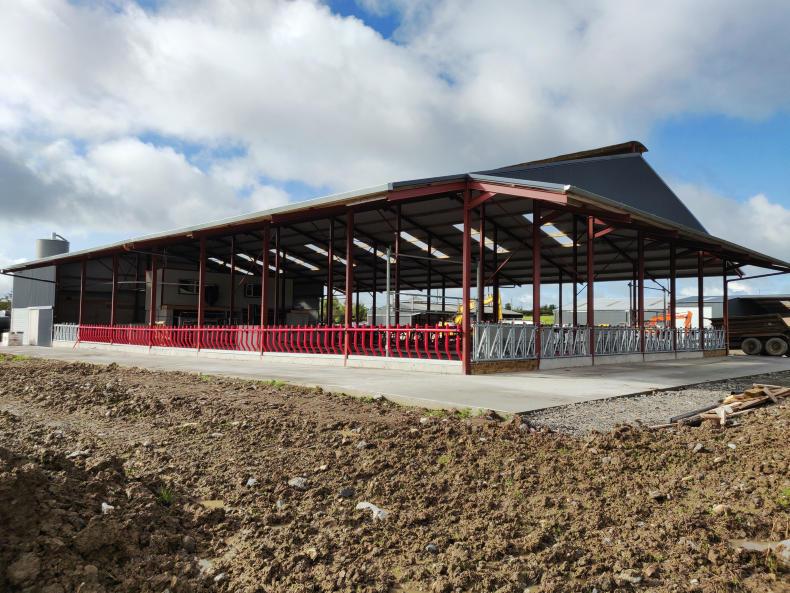
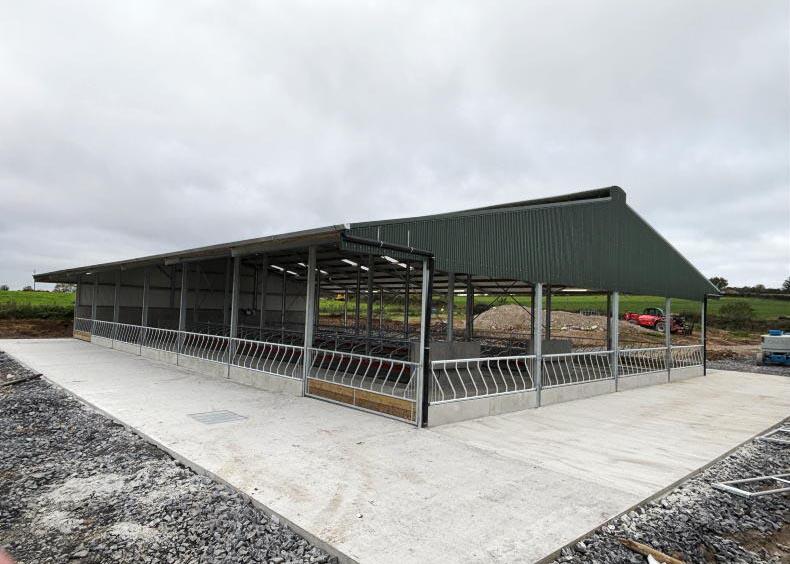

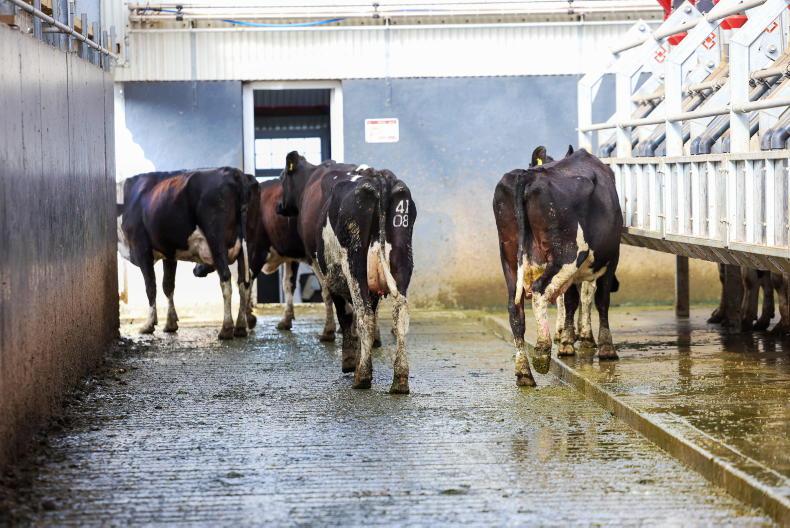
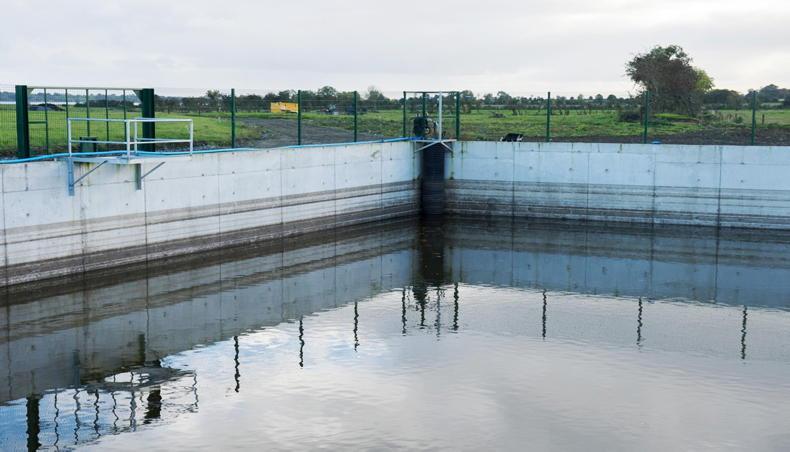
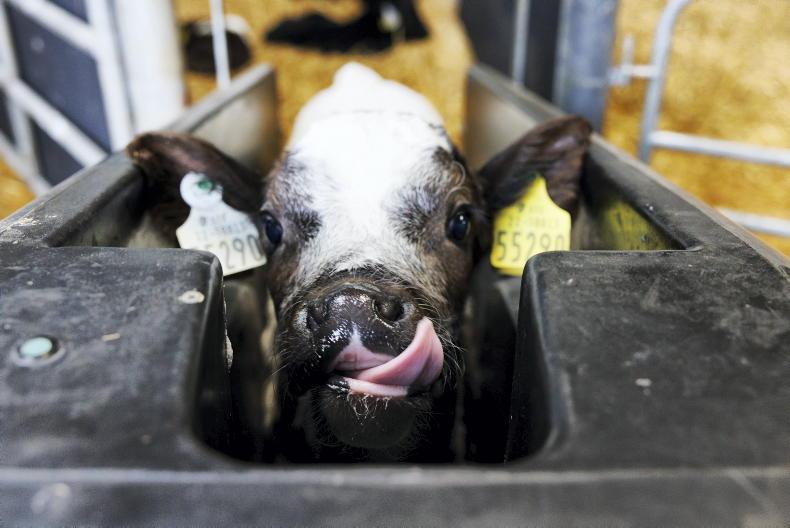
SHARING OPTIONS